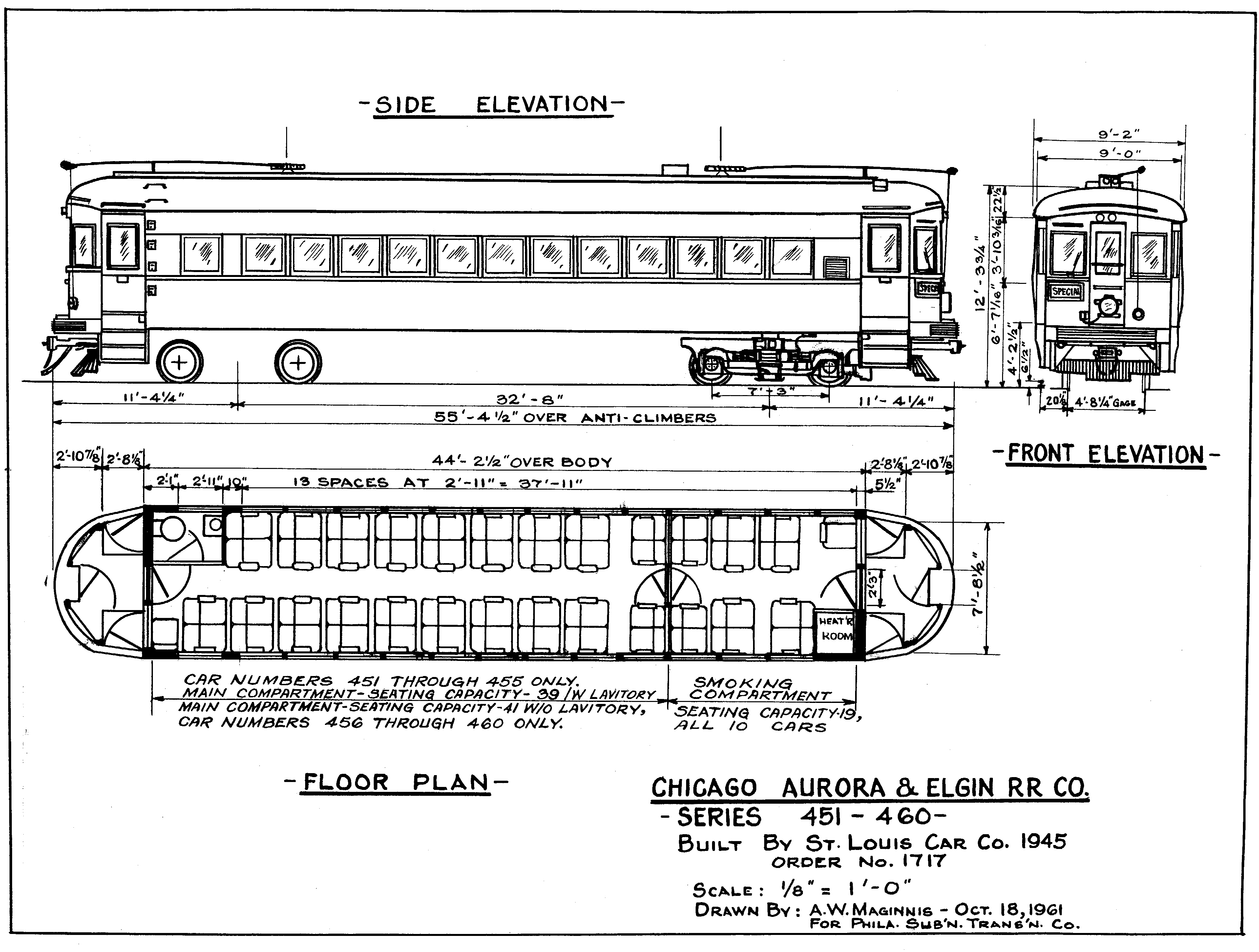 Drawing of CA&E 451 series by A. W. Maginnis.
Drawing of CA&E 451 series by A. W. Maginnis.
The Chicago Aurora and Elgin Railroad (CA&E), known colloquially as the "Roarin' Elgin" or the "Great Third Rail", was an interurban railroad that operated passenger and freight service on its line between Chicago, Illinois and the western suburban towns of Aurora, Batavia, Geneva, St. Charles, and Elgin. The CA&E connected directly with the Chicago Elevated (Metropolitan West Side Elevated Ry.) and the cars operated over the L to provide a one seat ride into the center of Chicago's downtown Loop.
The line proved to be very popular during the buildup of suburban living in the Western suburbs of Chicago, and was always short of equipment to provide a sufficient level of service. Throughout its entire history the line never retired a single car until it ceased operating.
In the early 1950's the State of Illinois decided to start construction on the long planned Congress St. Expressway on the right of way of the L and the CA&E and required the removal of the "L" structure used by the CTA and CA&E. While the CTA continued to provide service via a grade-level temporary alignment, the CA&E chose to cut back to Desplains Avenue in Forest Park. The loss of the one-seat ride placed the CA&E line at a severe disadvantage. Wounded by this and the increased use of automobiles during the 1950's the CA&E quite abruptly ended passenger service in 1957. This led to years of political wrangling before the railroad was finally liquidated in 1962.
With traffic still increasing on the eve of World War II the CA&E ordered 10 new interurban cars from St. Louis Car Company in 1941 but they were held up by the shortages created by the war. Once the war ended the cars were built and delivered in the fall of 1945. While these cars incorporated some more modern features available in equipment built in the post war era they had to be able to operate with the railroads older equipment, and this precluded any radical designs. Most historians view these cars as the last traditional interurban cars built in the United States.
The 453 was sold to the Trolleyville Museum in Olmstead Falls, OH in 1962 where it was used sporadically on their demonstration railway. The Trolleyville Museum folded in 2005, and the collection was transferred to the Lake Shore Electric Railway in 2006. The Lake Shore Electric Railway had plans for a heritage trolley operation along the Cleveland waterfront. However these plans did not come to fruition and the Lake Shore Electric Railway was broken up in 2009. The 453 was purchased by the ECTMA during the liquidation and moved to Scranton for eventual restoration and operation.
 Drawing of CA&E 451 series by A. W. Maginnis.
Drawing of CA&E 451 series by A. W. Maginnis.
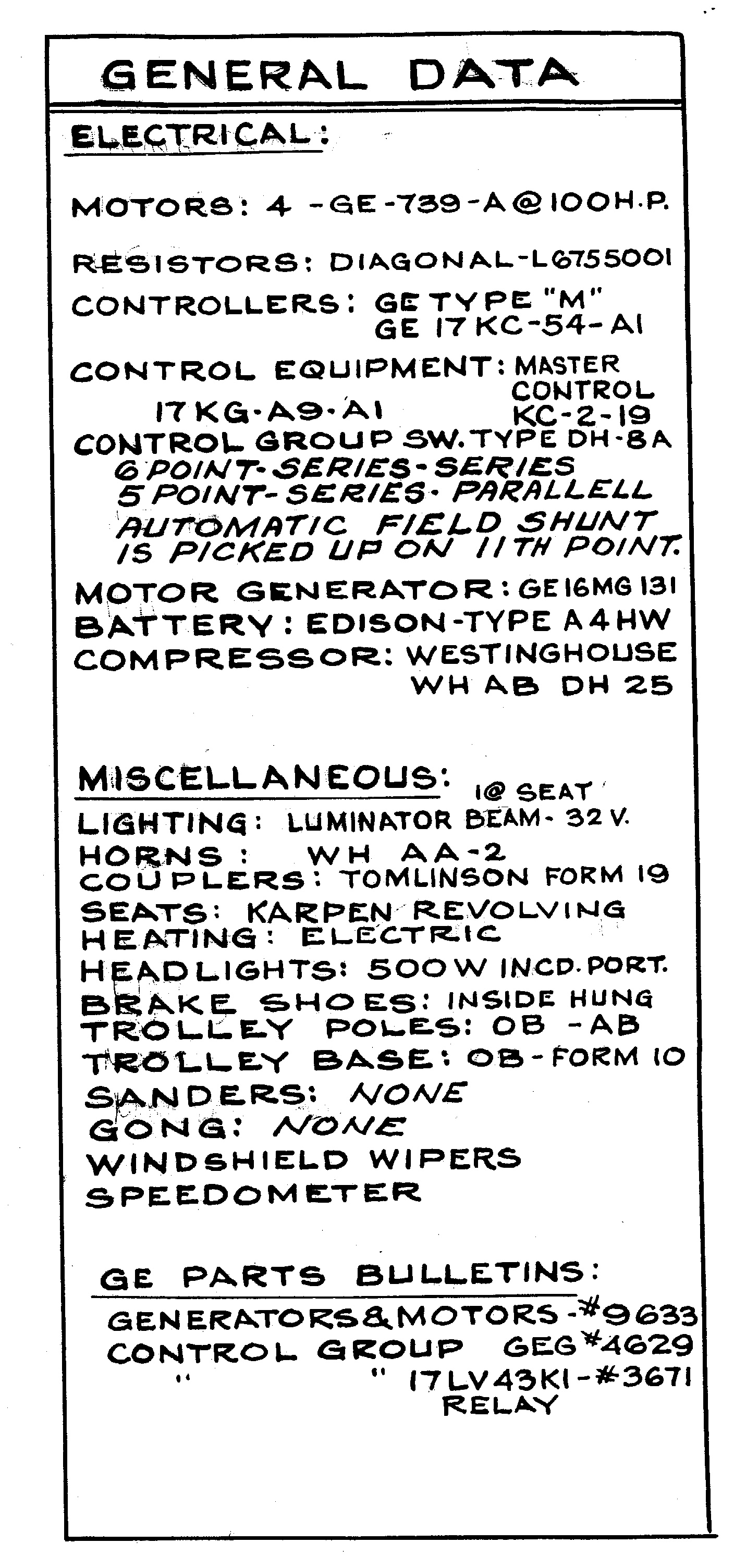 General Data for CA&E 451 series, compiled by A. W. Maginnis.
General Data for CA&E 451 series, compiled by A. W. Maginnis.
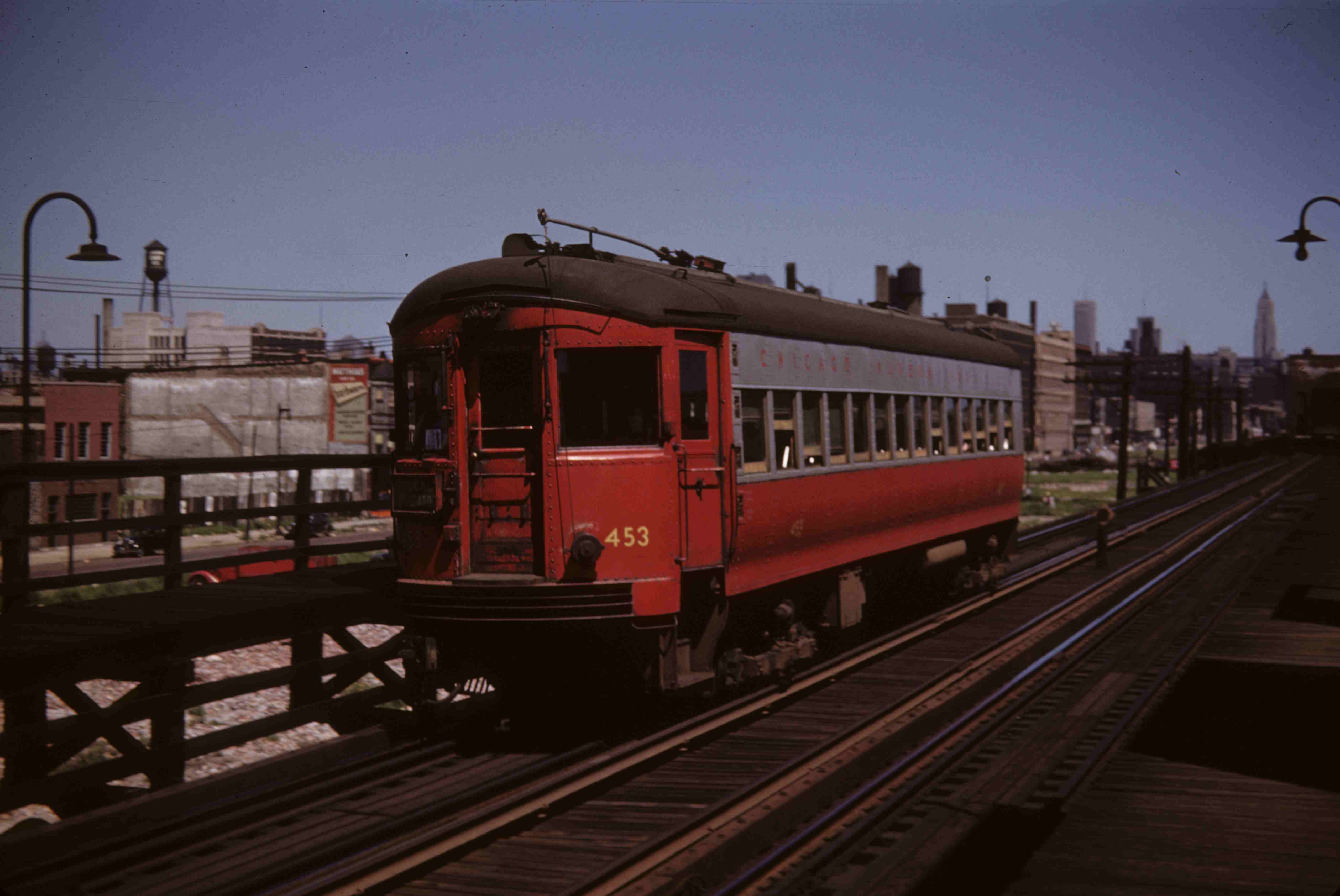 CA&E 453 Westbound at Laflin, Aug. 6, 1950 - Henry Stange photo - Krambles-Peterson Archive.
CA&E 453 Westbound at Laflin, Aug. 6, 1950 - Henry Stange photo - Krambles-Peterson Archive.
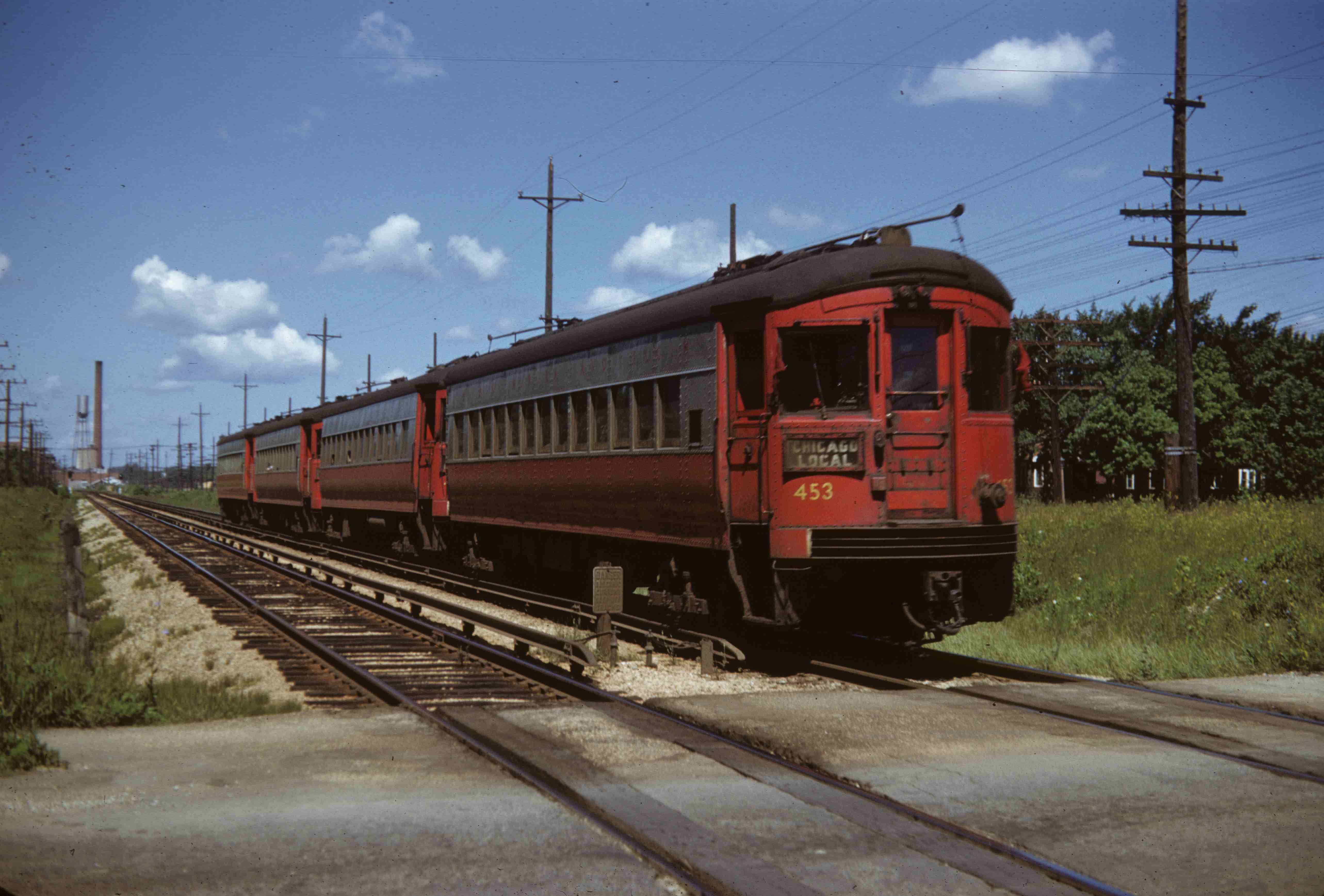 CA&E 453 Westbound at Berkley, July 1, 1951 - Henry Stange photo - Krambles-Peterson Archive.
CA&E 453 Westbound at Berkley, July 1, 1951 - Henry Stange photo - Krambles-Peterson Archive.
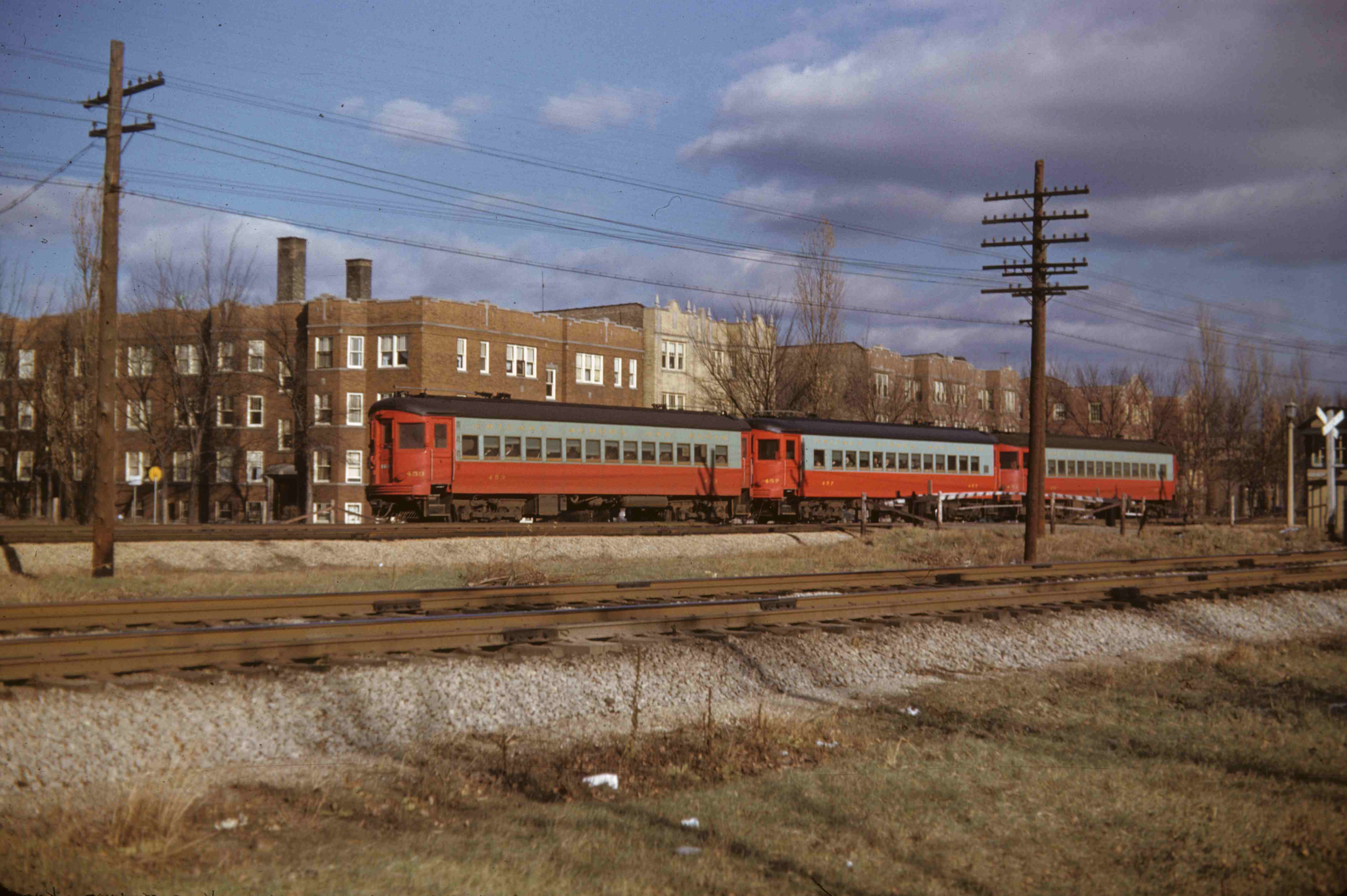 CA&E 453 Westbound near Oak Park, Nov. 18, 1951 - Henry Stange photo - Krambles-Peterson Archive.
CA&E 453 Westbound near Oak Park, Nov. 18, 1951 - Henry Stange photo - Krambles-Peterson Archive.
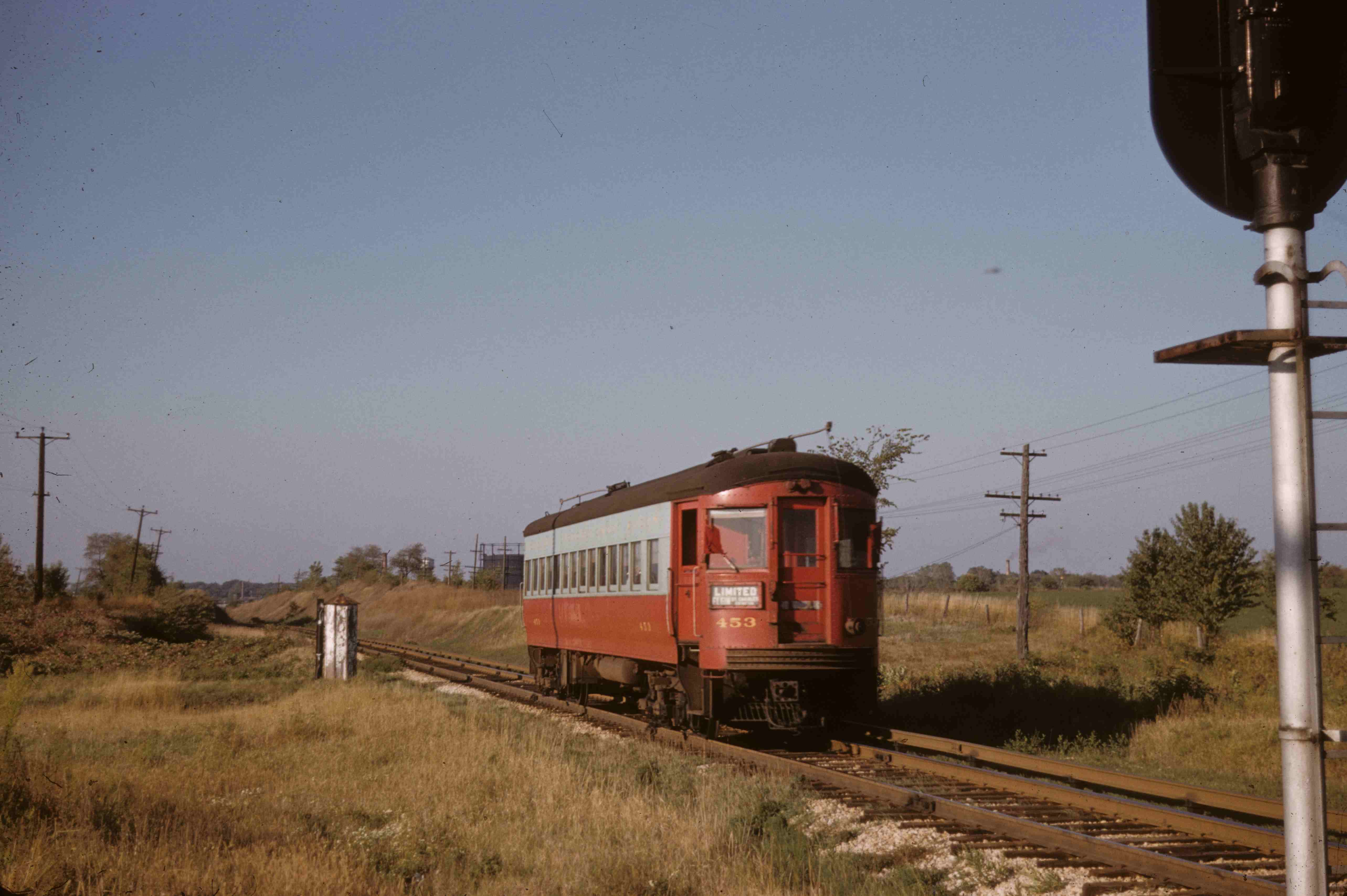 CA&E 453 Westbound on Elgin branch, Oct. 1, 1955 - Bill Janssen photo - Krambles-Peterson Archive.
CA&E 453 Westbound on Elgin branch, Oct. 1, 1955 - Bill Janssen photo - Krambles-Peterson Archive.
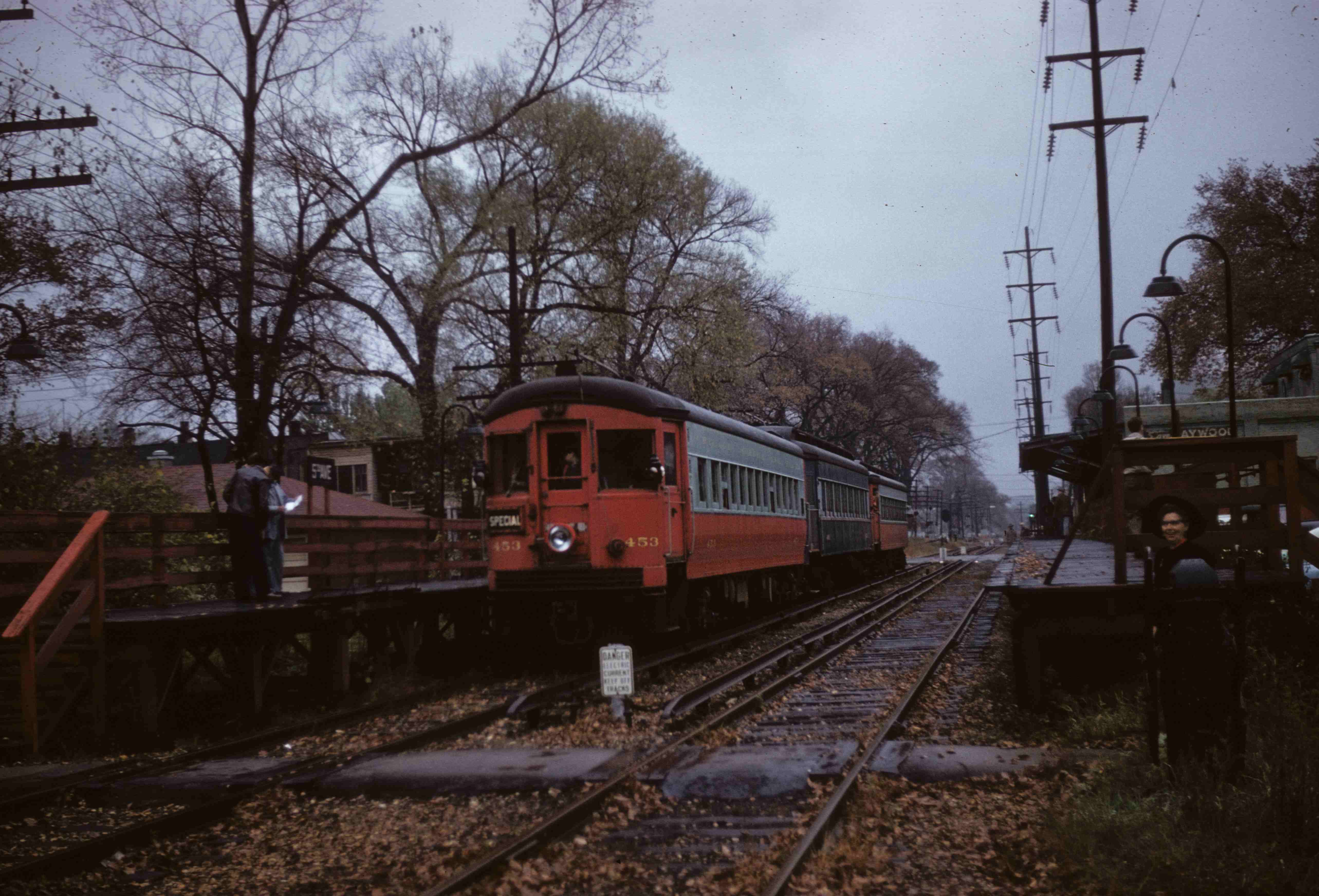 CA&E 453 Westbound at 5th Avenue, Oct. 26, 1958 - Tom Desnoyers photo - Krambles-Peterson Archive.
CA&E 453 Westbound at 5th Avenue, Oct. 26, 1958 - Tom Desnoyers photo - Krambles-Peterson Archive.